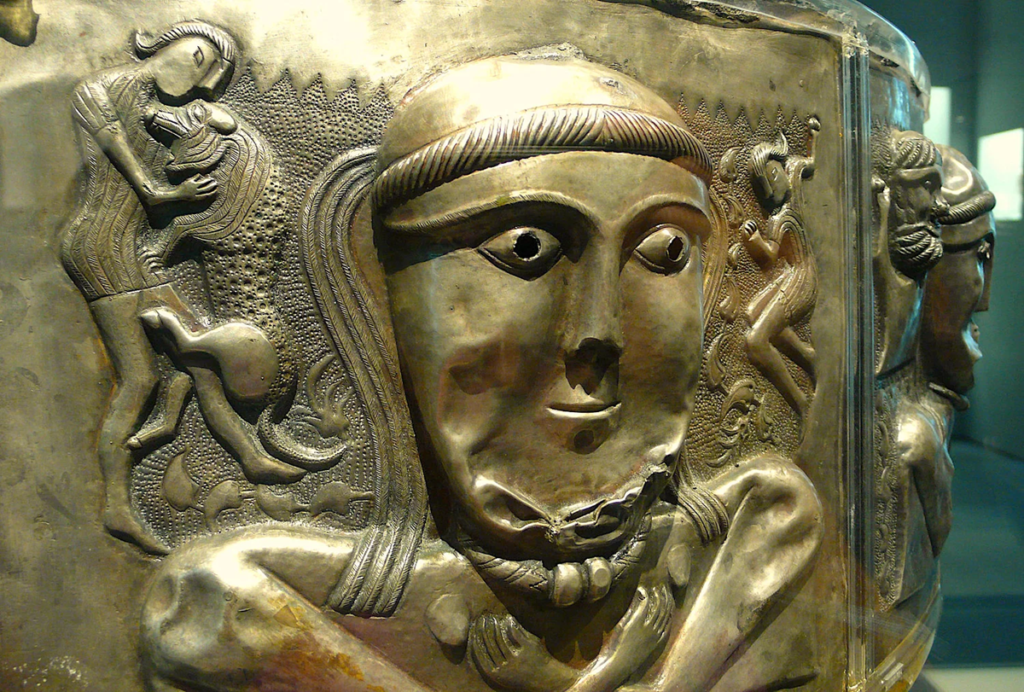
Celtic mythology is like the mist that rolls over ancient hills—mysterious, beautiful, and rooted in lands that stretch from Ireland and Britain all the way to modern-day France, Spain, Germany, Switzerland, and even parts of Ukraine. Yes, the Celtic world was vast and vibrant, a cultural network that once shaped much of prehistoric and early historic Europe.
Who Were the Celts?
The Celts weren’t a single nation, but rather a collection of tribal societies connected by language, art, and belief. By the 6th century BCE, their influence stretched across much of Europe. They left no centralized texts like the Norse Eddas or Greek myths—much of what we know comes from Roman accounts, archaeological finds, and the oral traditions later written down in Christianized forms in Ireland and Wales.
The Celtic Pantheon – Gods and Goddesses of the Wild
The Celtic gods and goddesses were as wild and diverse as the forests they were worshipped in. Many were local deities, tied to rivers, hills, and groves, but some gained pan-Celtic fame:
- The Dagda – The “Good God,” a father-figure with a massive club that could kill or bring the dead back to life. Also had a bottomless cauldron of endless food—true hero of any feast.
- Lugh – A god of many talents: warrior, smith, bard, and king. Known as “Lugh of the Long Arm,” he was honored at Lughnasadh, a harvest festival still echoed in modern traditions.
- Brigid (Bríde) – Goddess of healing, poetry, and smithcraft. So beloved she became Saint Brigid after Christianity swept in. Her sacred flame still burns in Kildare.
- Cernunnos – The mysterious horned god of nature and animals, often seated cross-legged, surrounded by beasts. A protector of the wild and the liminal.
- Epona – Goddess of horses, protector of riders and cavalry. Worshipped across the Roman Empire, often in stables.
Myths that Moved Mountains
Celtic myths don’t follow the linear storytelling of other traditions. They’re woven in cycles, especially in Irish mythology. Some key stories include:
- The Ulster Cycle – Stories of Cú Chulainn, the fierce child-hero with superhuman rage and tragic fate.
- The Mythological Cycle – Tales of the Tuatha Dé Danann, a race of god-like beings who came from the sky and became Ireland’s hidden folk after losing to the mortal Milesians.
- The Mabinogion (Wales) – A collection of epic tales full of magic, prophecy, love, and war. Think Arthurian myth, but older and weirder.
The Celts also believed deeply in the Otherworld, a place of eternal youth, feasting, and beauty, separated from our world by thin veils—mists, lakes, hills. It was not a place of judgment, but mystery.
Sacred Nature and No Written Bible
What makes Celtic mythology so unique is its bond with nature. Trees (especially oaks, yews, and rowans), rivers, animals, and stones were sacred. Druids—the priestly class—were revered for their wisdom, though they wrote nothing down. Knowledge was memorized and passed by word and ritual, preserving the myths through generations.
Where Are the Celts Today?
Descendants of Celtic culture live on in Ireland, Scotland, Wales, Cornwall, Brittany, and parts of Galicia (Spain). Linguistic and cultural revival movements are keeping ancient traditions alive. In Ukraine, Celtic influence appeared in western regions like Galicia and Zakarpattia, where La Tène culture sites and artifacts suggest deep prehistoric contact.
Blog prepared for you by the Algizrune Art – Historical Jewelry Makers — storytellers, artists, and whispers of the ancestors.